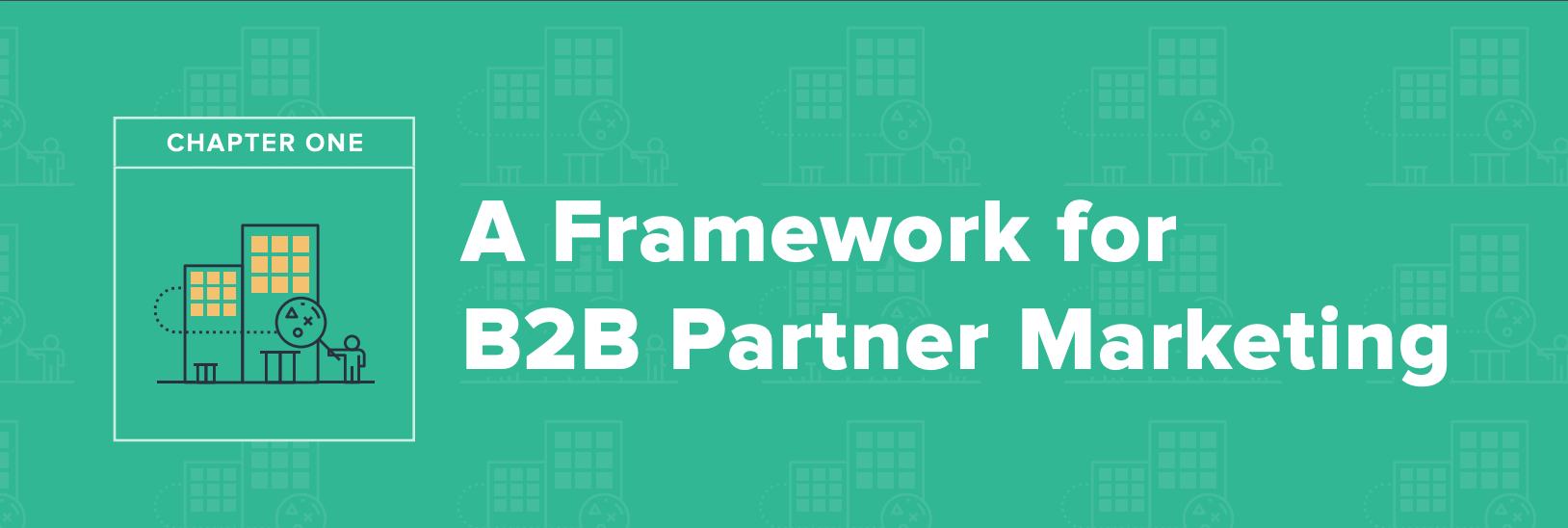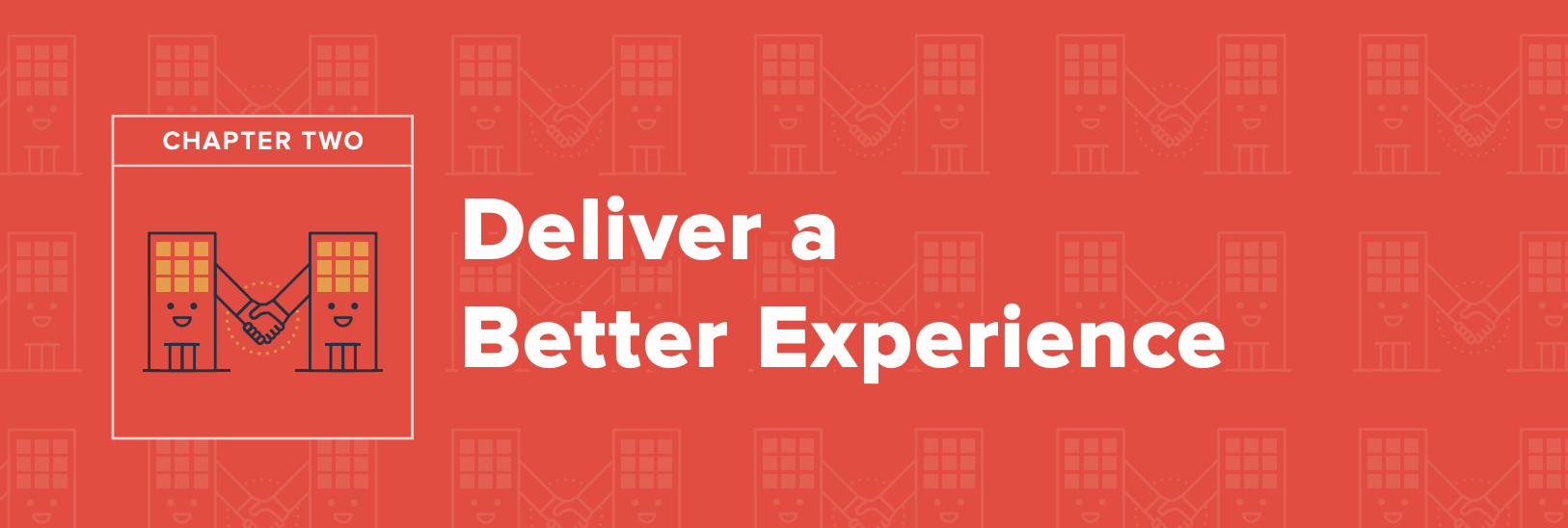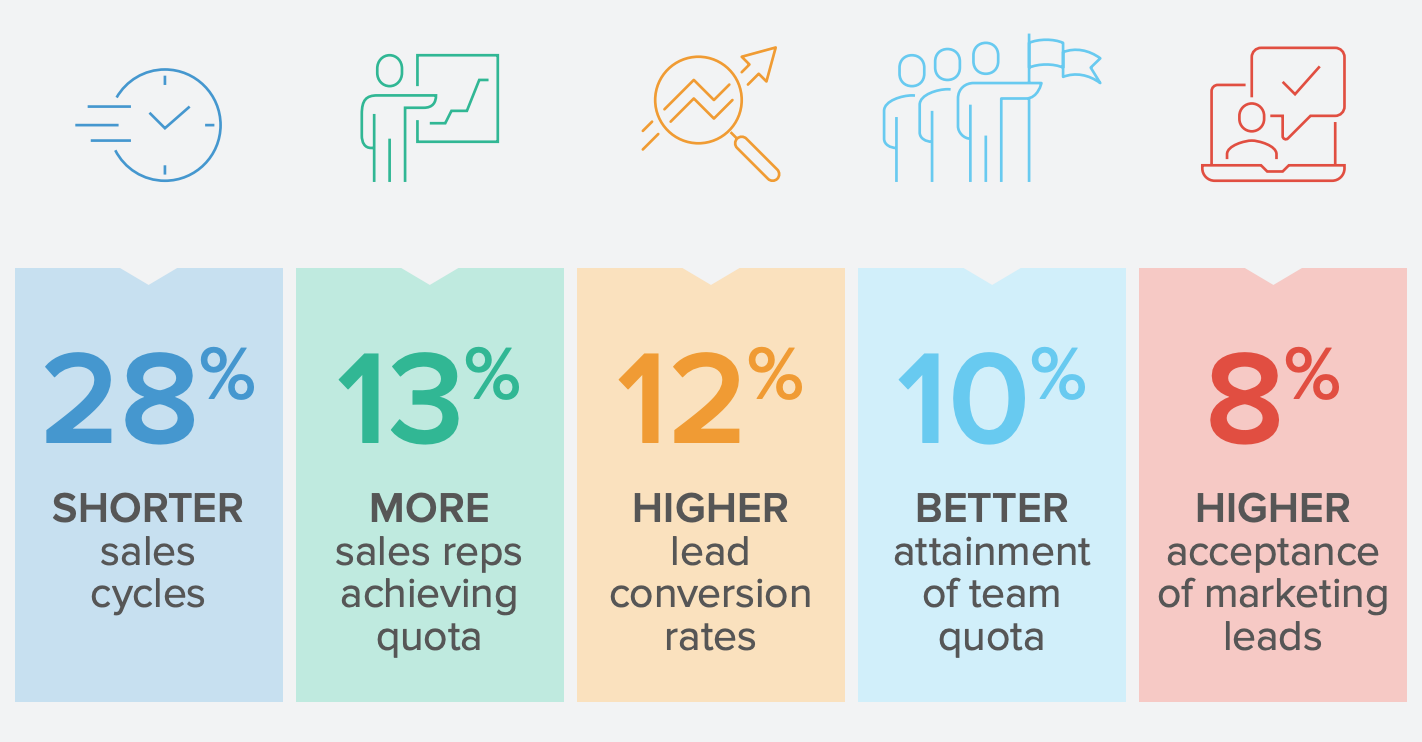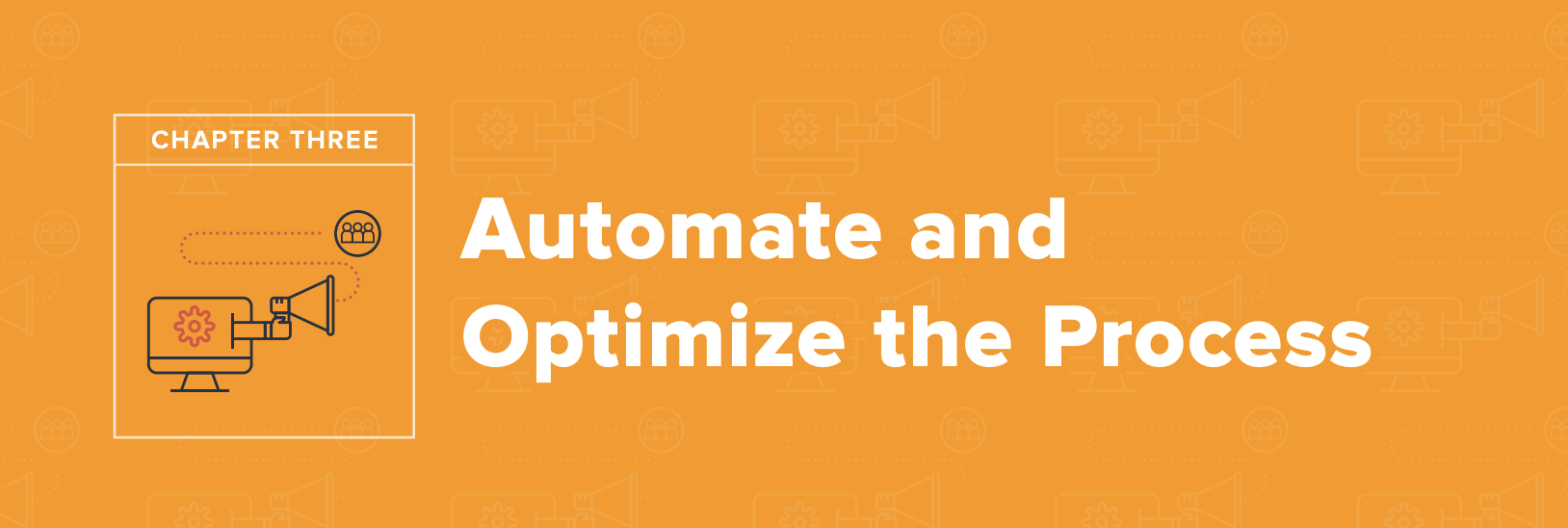In today’s multi-channel, always-on, digital landscape, it has become increasingly difficult for marketers to generate awareness, trust, and ultimately acquire customers in one certain way, at one specific place without enlisting in the help of partners to increase success. And with more and more companies leveraging partner marketing, it’s never been more important to examine and improve partner relationships.

Partners can be effective in adding to your total value proposition, better addressing your customer’s needs, further differentiating your product from the competition, and helping acquire more customers, faster. They can even help fill holes in your offerings or delivery, all while extending the strength of your brand to potential customers. Intelligently managing partners also helps marketers understand what can be attributed to each marketing factor and channel to explain the influence on sales. Most importantly, partners should help deliver one shared experience to your end consumer.
To truly scale this sales and marketing channel and provide partners with the tools they need, marketers must first focus on their relationships. What strategies need to be in place to serve partners? How can marketers provide a better experience for partners? What technologies should marketers leverage to automate and optimize partner marketing?
In order to scale your partner marketing efforts, in this eBook we’ll explore:
- A 3-step framework for B2B marketers to build a successful partner marketing strategy
- How to deliver a better experience that results in more leads, and ultimately, revenue
- The importance of automating and optimizing your process for scale

Before we dive right in, let’s make a few assumptions. First, your buyers are researching your brand before actually engaging with you. Roughly 80% of the B2B buyer’s journey is complete before a buyer reaches out to sales2. Which is why it’s crucial to build relationships with customers using the help of partners.
Second, let’s assume we’re working off the same definition of partner marketing.
What is partner marketing?
Partner marketing leverages the synchronicities of two companies – each with its own brand equity, core expertise, unique value proposition, and its own distribution strength – to create strategic alliances to gain market share both companies otherwise may have a long and arduous process of acquiring.
For example, a US-based software company is looking to expand into EMEA. Instead of relocating employees, hiring and providing extensive training on culture and processes and GTM strategy, as well as footing the bill for the expensive overhead that comes with more offices, the company decides to develop strategic partnerships in EMEA. These partners are experts in the region, have their own networks and existing customer bases of the target profile, and can be quickly brought up to speed on the product offerings. This will decrease the timeline and cost to acquire and service customers in EMEA. Additionally, this partnership provides greater marketing exposure which, ultimately, drives new customers.
In this instance, the company is able to dramatically decrease the speed to market while increasing the quantity and quality of feedback from their target market, via local, experienced partners.
Another assumption we can make is that you are part of a B2B organization and are looking for ways to create strong, relevant, and effective partner programs.
So, with these assumptions in place, where do marketers start when it comes to developing a partner marketing plan?
Let’s dive into the three pillars of partner marketing.
Increasing the number of partners in your program
Similar to running a referral program, partner marketing is in part a numbers game. Instead of limiting your program to a small niche group, you’re likely to see better results with expanded outreach. When companies open up their programs to different types of partners, activity spikes and the top of the funnel begins to expand.
Here are 3 ways to cast a wider net when it comes to reaching more potential partners:
- Promote Your Program: Don’t rely on partners to come to you or hope that the right partners will find your program. Announce your program launch through dedicated emails to those already in your network, such as industry associations, to start seeing results quickly. And keep the momentum rolling by sharing a media statement on LinkedIn or distributing a press release for every new partnership developed. This exposure is good for both sides and shares a unified front to the public.
- Add a Program Overview Landing Page: Provide partners with a comprehensive overview of the program by having a dedicated page to educate them. This also makes it easy to share URLs and point back to this page whenever promoting your partner program.
- Utilize a Self-Serve Registration Page: Having a registration page allows potential partners to “opt-in” and for you to collect additional information, such as their company profile and other useful details. Once they submit an application via the registration form, you can choose to immediately deliver access to your program, or do additional manual screening. Either way, applications or registration pages substantially reduce the front-end administrative time with prospective partners that may not be a good fit. Don’t forget, for relationships you’ve established with existing partners, include them into your program to make participation turnkey.
While quality usually trumps quantity, it’s important to choose the right partners that make sense for your business and to the end consumer. There should be a synergy and balance in the relationship between two different organizations with unique, but complimentary offerings.
Typically, when companies have the right messaging and relevant incentives for partners that are adding to the top of the funnel, passing along leads, and even helping to close deals – a ripple effect is created.
In order for partner marketing to work, it must be beneficial for all parties.
Attribution: Track all of the leads your partners are driving, as well as pipeline attribution and new deals
Most marketers today are interested in – okay, obsessed with – metrics, data, and analytics. And conversion tracking is just as important to partners. By giving partners visibility into your sales process, partners are empowered to see the prospect go through the entire lifecycle, not just hand over a lead.
Top of funnel: It’s critical that you recognize your partner’s efforts when a lead they generated converts on your website or is submitted by the partner. If your partner program leverages automation, you can easily notify partners via triggered email notifications.
Bottom of funnel: When a partner’s lead ultimately becomes a paying customer, brands need to share the details with the partner. Often times, the sales cycle can be long, so reaching out to acknowledge the attribution is a great opportunity to validate their efforts and engage with them to continue their promotion of your products and services.
Pay Day! Whether you are paying a one-time fee, recurring commissions, or have a revenue-share percentage agreement, partners want clear communication on when they’re being paid and how much to expect. Again, automated email notifications tend to work best.
Incentive: Ensure you are offering the right incentive at the right time by understanding what matters most to your partners
While there’s no one-size-fits-all approach to developing an incentive structure, it’s important to build a program that best suits your company and partners. Determining the mechanics of your commissions or revenue share is the first step in developing an effective program that will generate the most leads for your business. The most successful incentive structures are easy to explain, implement, and payout.
Here are 3 types of incentive types to consider:
- Utilize a Revenue Share: Most partner programs offer a commission that is a percentage of the total purchase. You can easily fulfill cash payouts all over the world via PayPal or Payment Rails, and these are best-in-class options. Tip: If you’re a SaaS company, recurring commissions are a popular way to ensure alignment with partners and their referrals.
- Offer a Dual Incentive: Rewarding both the partner and the referee, shared end customer, can provide a substantial lift. And, helps the partner further establish a relationship with their referral prospects.
- Tiered Model: Partner leads close a much higher rate than other channels, but not every lead immediately turns into new business. These valuable leads are likely worth some small incentive – think $20-$100 – as a way to recognize and encourage more partner engagement and activity. Then, when a partner lead closes and becomes a paying customer, you should provide them a larger commission.
Having a partner program in place that can reach new audiences, increase your pipeline, and motivate partners to continue referring new business is the cornerstone of every growing B2B organization’s marketing plan.

Securing partners (and figuring out incentives) for your program is just the first step in a successful partnership. Maintaining and nurturing relationships, as well as delivering the best experience possible are in the long term more important aspects of partner marketing, yet are sure to be time and resource intensive, if not executed properly.
With marketers adopting more personalized strategies, like nurturing via email workflows or developing segmented campaigns, partners are also looking beyond traditional methods of engagement and expecting to build long-term relationships with organizations.
But when companies neglect to focus on the partner experience, partners often look elsewhere and satisfaction, engagement, and sales often suffer. The human element of building relationships is a must-have factor of partner marketing. Without having conversations with partners, providing up-to-date marketing materials, and education on your product/service, your partner marketing experience would be null.
Here are a few ways to focus on the partner experience, in order to build healthy, long-term partnerships:
- Create an Educational Guide or Video: Send a toolkit with all of the details to new partners in a welcome email and include a link on your program overview landing page. Include information on best practices for promoting your brand, how to utilize their partner portal, recommendations for seeing success, and more.
- Host a Dedicated Partner Portal: Customize the experience for each partner in your program with a “home base” in a white-labeled portal. Here is where each partner’s dashboard will live, along with promotional materials, and the ability to submit referral leads. This is a great place to post recorded webinars to share updates and provide ongoing education to communicate at scale.
- Send Dedicated Emails: Encourage engagement by providing valuable information via automated email notifications (see above: top of funnel, bottom of funnel, etc.) . These emails can offer suggestions for seeing success or even highlight top performers.
- Enable Engagement: Create a place where your partners can share with one another. A private Facebook group or a Salesforce community is a great place for partners to share with each other and your brand. As your partner community grows, consider in-person events or even certifications (such as, HubSpot’s Agency Partner Certification).
- Encourage Employee Promotion: Provide employees that have high touch points with your partners with copy or a graphic that they can use in their email signature to promote the program.
Engaging and building positive brand relationships with prospects via partners produces long-term results. In fact, according to a recent report by Aberdeen, the ability to deliver a seamless experience pays off big time for partners and the company. When enabled with technology and processes that support partner marketing efforts, companies see:

Expert Take: How HubSpot Drives Growth with Partner Marketing
While it is easier said than done, growing your business via partner marketing can be done with a little help from the experts. We sat down with HubSpot to learn how the inbound marketing & sales software company leverages partner marketing and the key variables they considered when scaling their business partner program.
Expand Types of Partnerships
HubSpot classifies their partners into three different categories: Sales partners, agency partners, and connect partners. Each partnership type has a unique model in terms of new customer acquisition, what their roles are, how they function operationally, and the value they provide to HubSpot. Each segment is also incentivized differently, based on their primary objectives.
By creating custom partner programs for a variety of segments, HubSpot is able to personalize campaigns, messaging, and incentives to the specific interests and motivations of each type of partner. Additionally, they have the ability to utilize different categories to achieve various marketing goals.
“We are able to expand and enter into new markets with ease by leveraging partnerships. Additionally, with partners, we are able to service clients that we may not otherwise be able to.”
Understand What Partners Value
Organizations that leverage partner marketing are investing in an opportunity to benefit from an active, engaged, and often times, localized network that understands exactly what their audience needs. This is why it’s of utmost importance for companies to truly understand what their partners value as well.
The best business partner program incentives are reflective of the hard work that partners put in as they share your product or service. While most marketers understand that a reward should be given in exchange for a lead, how can companies ensure that they’re using the right incentive for the right partners at the right time?
While financial rewards – revenue share, flat-rate incentives, and discounts – are definitely a part of the equation, it’s also important to find partners that VALUE their business and are looking to find solutions that are the best fit for their own clients.
“The partners that are solely focused on the financial motivation are typically not the best for long-term success. The partners that want to add value for their clients and pick the best solution for them are the ones that will ultimately develop the best relationship with you and your brand.”
Automate for Seamless Delivery
If you’re generating a healthy amount of leads per month, but don’t have a way to automate payments, your business partner program will become a drain on your marketing or finance team. The last thing you want is to be spending more time managing reward payouts to partners than investing in activities to develop your partners and acquire new business.
“Transparency is key when it comes to allowing your partners to know where they stand – in terms of how many of their leads have come through, where they stand in terms of payments, and other aspects of your program’s details.”
When carried out at a strategic level, partnership marketing can be expansive and deliver its full potential. More so, when companies focus on delivering a world-class experience they reap the benefits of building long-term relationships, such as:
- Better engagement amongst partners
- Total transparency and visibility
- Increased engagement
And by automating the tedious tasks that go along with creating long-lasting relationships – like form submissions, lead tracking, and payments – your marketing team can start scaling a channel that really drives long-term growth.

In today’s rapidly changing technology landscape, partner marketing platforms that are flexible and have the ability to scale easily will allow you to deliver a better experience from start to end. And enabling turnkey execution of your program will ultimately extend your ROI.
This is when modern marketers can leverage technology to automate manual processes that can slow down or limit your potential. A partner marketing platform is undoubtedly the fastest way to provide robust programs, fully-automated tools tailored specifically to partner needs while fostering a rewarding partner experience. But with so many apps, tools, and systems on the market, it can be tough to know just what to look for in a vendor.
So let’s get a bit technical – here are 6 must-have capabilities to look for with a future partner marketing technology vendor:
Automated Registration
Assuming you’ve done a great job promoting your partner program, approving new partners and granting access should be as automated as possible. With a customizable registration page, you can collect all the necessary information from a prospective partner and via intelligent workflows, immediately grant access to a personalized partner portal. If qualitative research is required, you should have the option to gate access and manually approve partners with the click of a button.
Direct Entry Functionality
Partners tend to have a more personal relationships with your brand and are likely to have contacts they want to recommend for individualized follow-up. Direct entry allows partners to enter the information of a prospect or lead into a form and is seamlessly integrated with your other business systems, such as Salesforce. This lead form should be customizable in order capture the information critical to your lead routing and marketing/sales processes.
Tracking & Attribution
We’ve talked a lot about rewarding partners for new leads and paying customers, but brand exposure and visibility are often just as valuable. With branded, trackable links and marketing collateral (banner ads, logos, etc.) you can track just how many prospects are driven to your website from each partner. Know which leads convert, how much pipeline is generated, and which referrals become customers across all your channels via any combination of javascript, API, and/or webhooks.
Since so much business is done over the phone these days, it’s important to ensure your CRM has a bi-directional sync with whatever partner platform you choose. What does this mean? If your sales rep receives a call from a partner or a partner lead, and manually creates a lead or opportunity, they can enter the partner info into the record and the partner platform will be automatically updated to attribute that referral to the proper partner.
Seamless Integration
Every brand is unique, and your partner program – and subsequent partner lead experience – should be native to your existing processes. Be sure to work with a platform that allows for multi-channel attribution and integration, and is considered to be “platform-agnostic”. Which means it does not rely on any single system for attribution and integration. As your business grows, make sure the partner platform can work seamlessly regardless of what CRM or backend database you may be using. A robust combination of APIs, webhooks, and mobile SDKs are a must.
Custom Incentives and Experiences
Whether you want to offer tiered incentives based on what stage the lead is in, or you prefer to run different programs for different partner types, choose a platform that gives you the flexibility to customize your partner marketing efforts. The five must-have reward structures that your platform should be able to support are tiered incentives, flat-fees, dual-incentives, revenue-share percentage, and recurring commissions.
Automated Payouts
Partners who receive their payout in a timely, no-fuss manner are going to continue promoting your offering. Whether you want to automate based on user activity for completing an event or have a revenue-share model, your platform should be able to handle seamless delivery of payment.
ROI of Partner Technology
As we mentioned above, delivering the right experience for the right audience is crucial for partner marketing success. Partnering with the right technology vendor is what can make all the difference. Here’s a look at the ROI of various clients that leverage Ambassador to power their partner marketing programs:


In the B2B marketing world, partner marketing plays a crucial role in acquiring new business. Engaging and building positive brand relationships with prospects via channel partners, value-added resellers, and agencies produces material results that compound over time.
“Nothing accelerates a purchase decision faster than a word-of-mouth endorsement from a peer whose only agenda is to help.” – Gartner
The best way to expand your organic reach is to leverage the relationships that your brand already has with partners and drive positive word-of-mouth across all your channels.
Partner marketing is not a short-term boost to your pipeline, it is a long-term strategy. Leveraging software empowers marketing and business development teams to free up time spent on administrative responsibilities. These available resources can now be used for more face-to-face with partners and focus on building relationships. And that’s a win-win for both partners and your business.
Benefits for partners
- Additional channel for revenue
- More service offerings
- Deeper relationship with you, and their clients
Benefits for Your Business
- Broadens the reach of your target audience, faster
- Increased amount of high quality leads
- Better insight into competition
As you’re building your business partner program, don’t make it difficult for potential partners to learn about and apply for your program. Focus your time, energy, and resources on developing relevant content and incentives, as well as training and supporting your partners. Let technology do the heavy lifting when it comes to collecting data, facilitating email communications, automating payouts, and analyzing trends.
This combination of relationship building and automation will allow you to efficiently optimize and scale your partner campaigns while providing one shared experience to your end consumer. You, and your bottom line, will be happy you did.
Scaling Your Partnership Marketing with Automation
Automation plays a critical role in scaling partnership marketing efforts effectively. By automating tasks such as lead tracking, communication, and reward payouts, businesses can focus more on nurturing relationships and less on administrative work. This not only increases efficiency but also ensures that partners receive timely updates and incentives, fostering a stronger, more engaged network. The ability to automate repetitive processes allows companies to manage a larger number of partnerships without sacrificing the quality of interactions.
Another essential aspect of successful partnership marketing is the continuous measurement of performance and ROI. By implementing robust analytics and reporting tools, businesses can track the effectiveness of their partner programs and make data-driven decisions. This helps in identifying high-performing partners and optimizing strategies to maximize returns. As the program grows, the ability to measure and adjust quickly becomes increasingly important, ensuring that the partnership marketing efforts remain aligned with overall business goals.
Unlock growth with referrals—request your free Ambassador demo today and see the impact firsthand!
Sources:
[1] CSO Insights 2016 Channel Sales Optimization Study
[2] If B2B Sales is Changing, Why Aren’t Buyers? | by John McTigue
